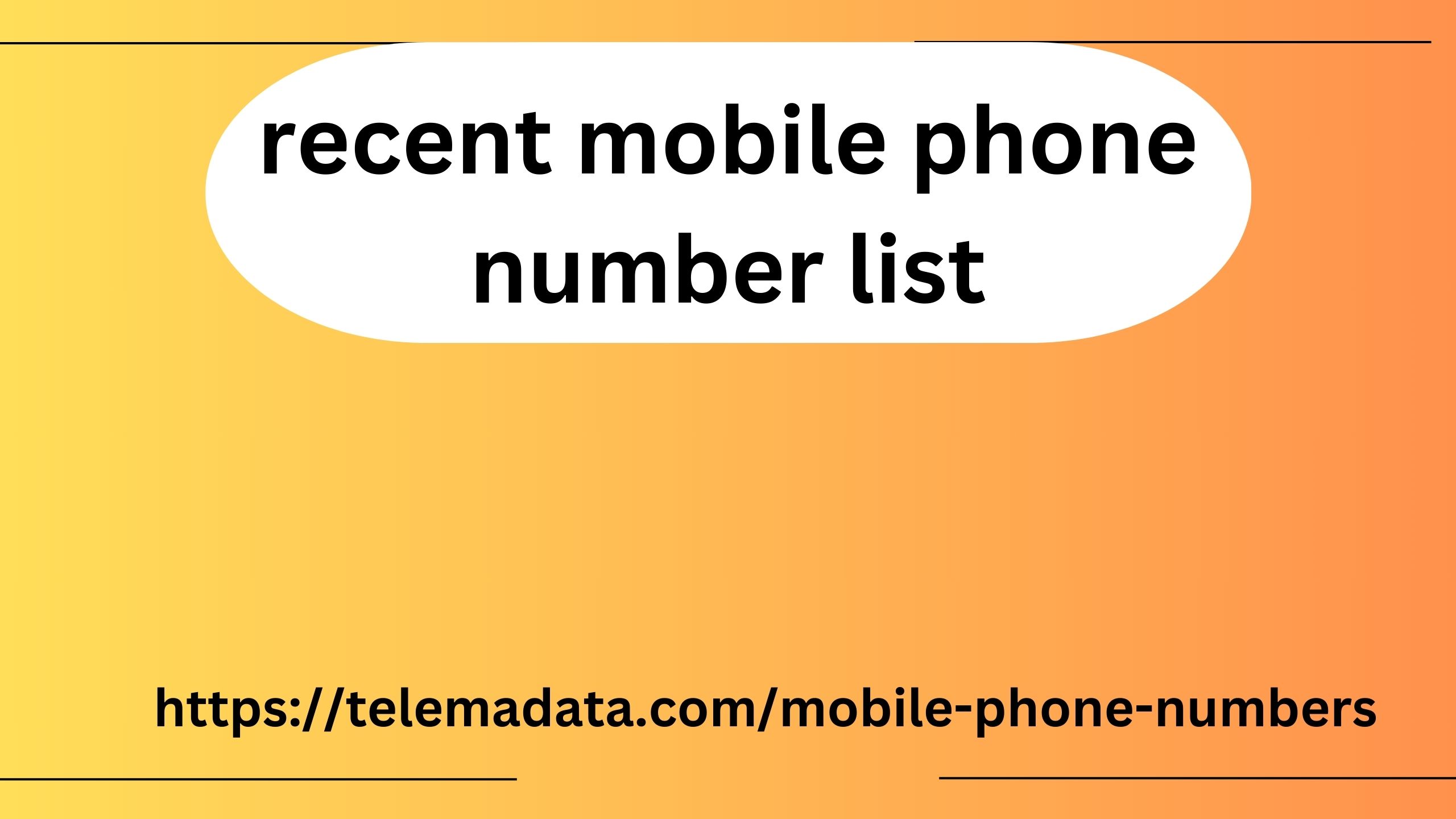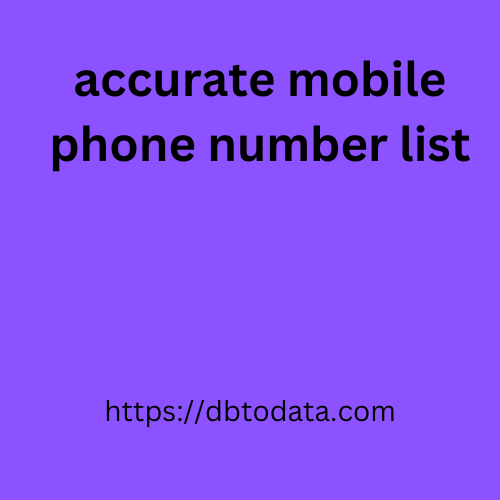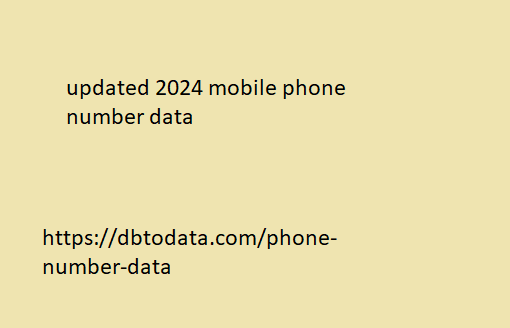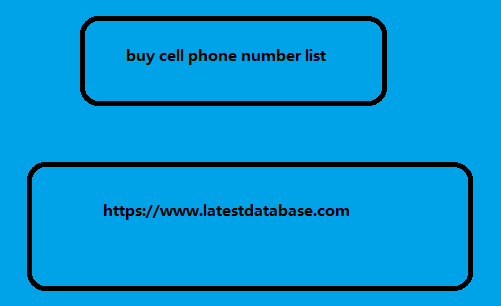Frequently asked questions:
If you are a business owner, digital marketer, or even a beginner in the world of SEO, this answer is very important for you: Yes, it is very important!
Talking about Search Engine Optimization (SEO) cannot be separated from the important role of internal linking. So, is internal linking just a buzzword, or is it a powerful weapon in your SEO strategy arsenal? Let’s dive deeper.
What is Internal Link?
Before we talk about the ‘why’, let’s talk about the ‘what’. Internal links are hyperlinks that point to pages on the same domain. This is one of the most overlooked forms of SEO.
For example, click here is an example of an internal link that will take you to our homepage.
Code Example:
Benefits of Internal Links for SEO
So why are internal links important? Internal recent mobile phone number list links make it easier for Google to understand the structure and content of your website. It’s not just about Google—your site visitors will also find it easier to navigate and find the information they’re looking for.
Benefits of Using Internal Links:
Improve user experience quality : Help users explore your website more efficiently.
Link equity distribution, strengthening page authority : Passing “ranking power” from one page to another.
Organize your website’s information hierarchy : Makes it easier for Google to index and understand each page on your website.
Difference Between Internal Links and External Links
It is important to differentiate; if internal links are links that point to pages within the same domain, external links are links that point to other domains.
Is it true that internal links are crucial in SEO strategy?
Example: If website A provides a link to website B, then that is called an external link.
Guide to Optimizing Internal Links

Plan Your Site Architecture
First of all, you need to plan your website architecture. This is important so that Google and users can easily navigate and understand the structure of your website.
You also need to plan the Site Architecture carefully.
You can see a simple Site Architecture that you can use in the image below.
Source: Semrush
Home Page -> Category -> Subcategory -> Sub-subcategory -> Final Content
Not only to connect content, but this site architecture is also good for links between categories. This is called an internal link, so users and Google will find it easier to understand your website.
If users find it easy and convenient to find information on your website, that’s a sign that your UX or User Experience is already great. And guess what? Google loves user-friendly websites. The result? Your website ranking can skyrocket!
Use Keywords in Anchor Text Attractively and Naturally
Anchor Text—two words you’ve probably heard a lot about, but do you really understand its power? Not just any text with a hyperlink, anchor text is the golden bridge that connects information across the web. Often, this text appears in the iconic shade of blue, but its power goes far beyond mere aesthetics.
If you’re new to SEO, including keywords in your anchor text is one of the most effective first steps to attracting more visitors to your site. Forget phrases like “click here” or “this page.” They’re stale!
You see, placing the right keywords in your welche produkte schützen ihre geschäftskommunikation anchor text will not only help Google understand your content better, but also give visitors a clear clue about what they will find when they click on the link. Oh yeah, using keywords in anchor text is also a best practice recommended by Google itself.
Now you know, right? Start practicing the art of keyword placement in anchor text, and feel the difference in your SEO performance!
Prioritize Relevant Pages
Links to pages you think are important and want to get more attention in Google search results.
Therefore, the page you want to appear on Google SERP must be a relevant page, for example if you have an SEO Management Services Page and an FAQ Page , between the two, which page do you expect to rank on
Google SERP ?
Make sure the internal links from the target page are pages that are relevant and useful for readers, and not pages that are of a different context or even click bait .
Vary Anchor Text
When the same anchor text is used to refer to different pages, it can cause confusion for both Google and users. Search engines may have difficulty determining which page is more relevant for a given query, while users may be confused by inconsistent information.
Concrete Example
Let’s say you have two articles on your blog:
Article about “How to Care for Ornamental Plants”
Article about “Health Benefits of Ornamental Plants”
If you use the anchor text “Read More About Houseplants” for both articles, it can be confusing.
Wrong : For more details, Read More About Ornamental Plants .
Wrong : To learn more, Read More About Ornamental Plants .
Better Examples:
To avoid confusion, use more specific and descriptive anchor text:
True : Learn How to Care for Houseplants in our article.
True : Find the Health Benefits of Ornamental Plants here.
This way, you not only make it easier for search engines to index your pages, but also help users get more accurate and relevant information.
Use Dofollow Link
So, what exactly is a ‘dofollow’ link? l! Why? Because many people are still unaware – usually due to negligence when using plugins – setting their internal links as ‘nofollow’, which is basically giving a ‘STOP’ signal to Google to ignore the link.
Don’t let this simple mistake ruin your SEO potential! Make sure all your internal links use the ‘dofollow’ attribute, so that Google doesn’t just ‘glance’, but actually ‘enters’ and ‘indexes’ your links.
Strategic Link Position
Brian Dean , a widely recognized SEO expert and founder of Backlinko, has conducted empirical research on the effect of placing internal links at the beginning of content on website performance. The results of his research show two important indicators that have changed: the percentage of ‘ bounce rate ‘ has decreased and ‘Dwell Time’ has increased.
Why is this significant? Because, a decrease in ‘bounce rate’ and an increase in ‘Dwell Time’ indicates that visitors are staying and interacting with your website longer. Google sees this as a strong indicator that your site is serving quality and relevant ao lists content, in line with its mission to organize the world’s information and make it universally accessible and useful.
By considering these sources of information—which come from experts in the field—and applying them to your SEO strategy, you will not only improve your website’s performance but also build credibility and trust in the eyes of search engines and your site visitors.





